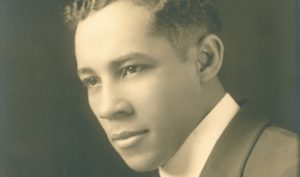
Edward Chandler
Edward Chandler was born on this date in 1887. He was a Black research chemist.
From Ocala, Florida, Edward Marion Augustus Chandler received a Bachelor of Science from Howard University in 1913 and a Master of Science from Clark University in 1914. He earned a Ph.D. in Chemistry from the University of Illinois in 1917. Dr. Chandler served as a Chemist for the Dicks David & Heller Company from 1917 to 1921. From 1921 to 1924, he worked as a Plant Chemist for Abbott Laboratories. Beginning in 1924, Dr. Chandler was a Consulting Chemist in Lake County, Illinois.
Dr. Edward Chandler’s main area of research was in triphenylmethane dyes. His dissertation title was The Molecular Rearrangement of Carbon Compounds. There are more carbon compounds than those of all other elements combined. The study of natural and synthetic carbon compounds is called organic chemistry. Plastics, food, textiles, and many other common substances contain carbon. Hydrocarbon fuels (e.g., natural gas), marsh gas, and the gases resulting from the combustion of fuels (e.g., carbon monoxide and carbon dioxide) are carbon compounds.
Carbon forms many important carbonates with oxygen and metallic elements, such as calcium carbonate (limestone) and sodium carbonate (soda). Certain active metals react with it to make industrially important carbides, such as silicon carbide (an abrasive known as carborundum), calcium carbide, used for producing acetylene gas, and tungsten carbide, an extremely hard substance used for rock drills and metalworking tools.
Chandler was a member of the Chemical Society, Fellowship in Chemistry, and Phi Lamba Epsilon. He was the second Black to earn a Ph.D. in Chemistry. (the first Black Ph.D. was Elmo St. Brady, University of Illinois, 1916). Edward Chandler died in Chicago, Ill., on March 22, 1973.
American Men and Women and Science. 4th edition
(New York: McGraw-Hill), p.170.
Blacks in Science and Education
Vivian O. Sammons.
(Washington, D.C.: Hemisphere Publishers),
1989. p.52.